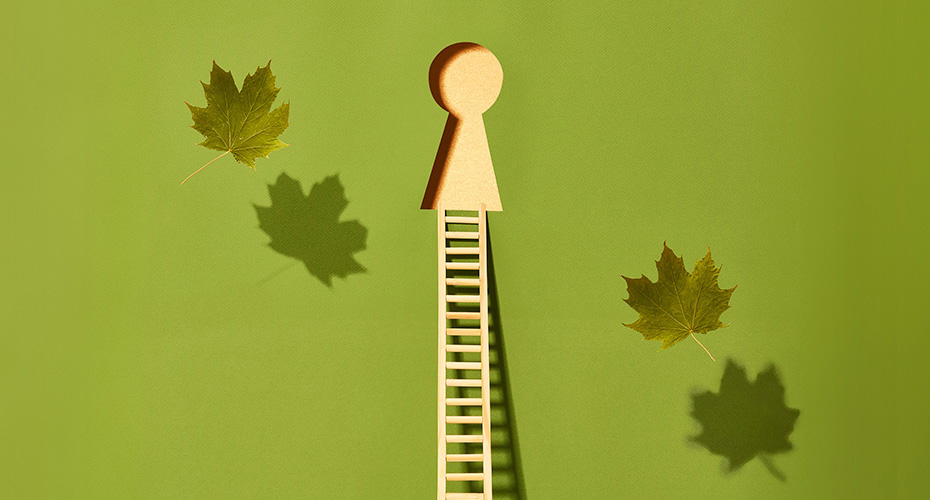Published December 13, 2023 • 14 Min Read
As a newcomer to Canada, your financial requirements may be different from those of long-term residents.
In your initial year in Canada, you may find that your financial needs are basic. However, as you establish yourself in Canada, your financial requirements will grow in alignment with your goals. We’ve crafted a comprehensive financial checklist for newcomers to Canada, which includes all the banking and financial products you may need in your first year here.
Banking checklist for your first week in Canada
Chequing account in Canada
A chequing account is indispensable for daily financial transactions in Canada. This will typically be the first Canadian bank account you open. It will serve as your primary account for receiving your salary and making bill payments. Funds in this account do not accrue interest but chequing accounts usually offer unlimited transactions, making them ideal for your day-to-day spending and transactions. Chequing accounts may come with a monthly fee, which can be waived under certain conditions.
When to open a chequing account
You should get a chequing account during your first week in Canada. Depending on which country you’re from and the bank you choose, you may be eligible to begin the account opening process virtually as early as three months before your arrival in Canada.
Debit card
A debit card, usually linked to your chequing account, serves as a payment card for transactions. When you use your debit card to make a purchase, the amount is debited from your chequing account immediately, and so debit card payments are considered equivalent to cash. You can also use your debit card to withdraw cash from an Automatic Teller Machine (ATM). Many websites do not accept debit cards for online payments.
When to get a debit card
You’ll likely receive this card when you set up or activate your newcomer banking account. The card will be ready for immediate use.
Credit card
A credit card is a payment card that allows you to make purchases with credit or funds borrowed from your financial institution. Credit cards typically have a billing cycle of 28 to 31 days, as well as a 21-day interest-free grace period. To avoid high-interest charges, you must repay the funds you borrow within this period. As a newcomer, establishing a credit history in Canada is crucial, and applying for a credit card is the initial step toward starting your credit history.
When to get a credit card in Canada
You should apply for a credit card as soon as you have an active Canadian chequing account, as it may take a week or two for delivery.
Typically, eligibility for a credit card is determined based on the applicant’s credit history. However, some institutions offer specialized newcomer credit cards that you may qualify for without an existing Canadian credit history.
Savings account
A savings account is a perfect tool for short-term financial planning, such as saving for an emergency fund or a vacation. These accounts generally offer limited transactions without fees but may have penalties for exceeding these limits. You will earn interest on savings in these accounts and can withdraw these funds at any time.
When to open a savings account in Canada
Newcomers can open savings accounts as soon as they arrive in Canada. Some newcomers may bring savings from back home while others might want to set aside a portion of their Canadian income, after expenses, for short-term financial goals.
Financial products for your initial six months in Canada
Tenant insurance
Tenant insurance (also called renter’s insurance) safeguards you and your landlord against unexpected incidents such as accidental property damage, fire, theft, and more. This policy insures your belongings, the landlord’s property, and helps cover your living expenses while repairs are being made to the rented property after an insured claim. When you purchase renter’s insurance, you pay a monthly premium for the duration of your lease.
When to get renter’s insurance
Tenant insurance is often mandatory before leasing a property in Canada. You may need to provide insurance details to the landlord before moving into a rental home.
Injury and illness insurance
This is supplemental (optional) insurance to cover certain health expenses not covered by provincial health plans, such as vision, dental, and prescription drugs. You may also want to get disability insurance to protect your income in case you’re unable to work because of an accident, illness, or disability.
When to get injury or illness insurance
You should purchase private injury or illness insurance after reviewing your provincial coverage as well as the group health insurance offered by your employer to ensure you’re safeguarded against high medical costs. In Ontario and Manitoba, international students may need comprehensive supplemental insurance, as they aren’t typically covered under provincial health insurance.
Saving plans for your first six months in Canada
As a newcomer, it’s never too early to start saving for your future goals, such as purchasing a home in Canada, funding your children’s education, or your retirement. Here are some popular savings plans you can leverage during your initial six months in Canada:
Tax-Free Savings Account (TFSA)
A Tax-Free Savings Account is a registered account that allows residents of Canada to grow their savings tax-free. Returns on investments held in your TFSA, including interest, dividends, and capital gains, are non-taxable. The Government of Canada determines what the annual contribution limit is each year, and any unused room carries over to the following year. You can keep a wide range of financial products in your registered TFSA account, including Guaranteed Investment Certificates (GICs), stocks, ETFs, mutual funds, and bonds. When to open a TFSA
If you’re a new Canadian permanent resident, you can open a Tax-Free Savings Account with RBC any time after you arrive in Canada. Applicants must be at least 18 years old and have a Social Insurance Number (SIN). You don’t need to show proof of employment or income to qualify for a TFSA. Since the TFSA contribution room is cumulative, your room will start accruing the year you become a PR, even if you don’t open a TFSA account that year.
Temporary residents, such as foreign workers and international students, may also be eligible to open a TFSA once they meet certain tax residency requirements.
First Home Savings Account (FHSA)
A First Home Savings Account is a registered plan aimed at helping Canadian residents save for their first home in Canada tax-free. You can contribute up to a maximum of $8,000 per year to your FHSA and there’s also a $40,000 lifetime limit. Up to $8,000 of unused contribution room can be rolled over to the following years. Withdrawals from this account, including your contributions and returns, are tax-free if used to purchase a qualifying first home.
When to open an FHSA
If you eventually want to buy a home in Canada (and don’t already own one), you may be eligible to open a First Home Savings Account. Permanent residents over the age of 18 who have a valid SIN can open an FHSA soon after arriving in Canada, whereas temporary residents, including work permit and study permit holders, must first meet the physical presence requirement to be considered tax residents of Canada.
Registered Education Savings Plan (RESP)
Registered Education Savings Plans are tax-sheltered registered plans designated for saving for your children’s post-secondary education or even your own. While these accounts don’t have an annual contribution limit, they do have a lifetime limit of $50,000. The government matches a portion of your annual RESP contributions to enhance your savings.
An RESP account can hold a variety of investment and savings products, including GICs, ETFs, mutual funds, stocks, cash, and more. When your child makes withdrawals from the RESP for educational assistance payments (EAPs), they will have to pay tax on the money. Since withdrawals are taxed in the hands of your child, who’ll likely have little or no other income during their studies, the tax liability is typically low.
When to open an RESP
Canadian residents can open an RESP for their child as soon as the child (the beneficiary) has a Social Insurance Number. The sooner you begin contributing to an RESP, the more returns you may be able to accumulate by the time your child begins post-secondary education.
Financial products for your first year as a newcomer in Canada
Car loan or lease
A car loan is a financing option that allows you to purchase an automobile by making a small down payment and repaying the rest of the purchase cost in installments, with interest.
Leasing is another popular financing option in Canada. A lease differs from a loan in that a loan allows you to buy a vehicle while a lease only allows you to rent it from the dealer for a predetermined period of time. While leasing is usually cheaper and allows you to change vehicles frequently, keep in mind that you won’t own the vehicle and will have to return it in good condition when your lease is over.
When to get a car lease or loan
As you settle down in Canada, buying or leasing a vehicle might make it easier to get around, especially if you’re living away from the city centre. You’ll need a valid driver’s license to drive, so be sure to get one before you start looking for a vehicle.
RBC financing options are available at over 4,500 dealerships across Canada, and you may be able to get a loan or lease regardless of whether you’re purchasing a new or used car.
Auto insurance
Auto insurance is mandatory for all on-road vehicles in Canada. Broadly, there are three types of auto insurance, but some of them are optional.
-
Liability insurance is a legal requirement for all motor vehicles in Canada. This helps cover any legal expenses and damage incurred if you’re at fault in an accident.
-
Collision coverage is an optional insurance that covers the cost of repairing or replacing your vehicle if it is damaged in an accident.
-
Comprehensive coverage is optional insurance that covers the cost of repairing or replacing your vehicle in case of non-collision-related losses, such as vandalism, theft, weather damage, and more.
When to get auto insurance
You must buy auto insurance (at least liability insurance) before taking ownership or delivery the vehicle. Your insurance must be valid from the day you take delivery of the vehicle or when your lease begins. RBC offers both liability and optional coverage and even gives you the option to bundle your auto and home insurance for additional discounts.
International money transfers
An international money transfer allows you to send money to a recipient in a different country in their local currency, directly from your bank account.
When to use international money transfers
Many newcomers in Canada choose to financially support their family and loved ones in their home country or to send one-off monetary gifts. Some banks allow you to initiate international money transfers in-branch or online using the web portal or mobile banking app.
Other savings products for your first year in Canada
High-Interest eSavings Account (HISA)
High-Interest eSavings Accounts can help you save money for your future goals. HISAs typically offer higher interest rates than regular savings accounts and, since funds in these accounts are insured by CDIC (up to a certain maximum), HISAs involve minimal risk.
RBC does not charge a monthly fee on HISAs and funds in this account will not be locked in and can be redeemed at any time. Transactions to and from your RBC personal deposit account are free but there may be monthly limits on how many withdrawals you can make to other bank accounts.
Guaranteed Investment Certificates (GIC)
A Guaranteed Investment Certificate (GIC) typically offers higher interest compared to savings accounts with minimal or no risk. CDIC insures your principal amount (up to $100,000) and, depending on the type of GIC you purchase, the bank guarantees all or a portion of your returns.
GICs may be redeemable or non-redeemable, and terms usually range between three months and 10 years. RBC offers three types of Guaranteed Investment Certificates:
-
Guaranteed-return GICs provide a fixed rate of return, agreed upon at the time of account opening.
-
Interest-rate linked GICs where you may be able to earn higher than expected returns if the bank’s prime rate increases.
-
Equity-linked GICs link your earnings to the equity market. You’re guaranteed a certain minimum annual return with the possibility of earning much more if the underlying equity investment grows.
Other investment products for your first year in Canada
As a newcomer, there may also be other investment options to explore, depending on your risk appetite. Equity, mutual funds, exchange-traded funds (ETFs), and bonds are popular investment products in Canada. You can hold investment products in registered or unregistered accounts.
Beyond year one: Financial products you may need
Registered Retirement Savings Plan (RRSP)
A Registered Retirement Savings Plan allows Canadian citizens and permanent residents to save for retirement. Contributions made to this account are tax-deferred and can be deducted from your taxable income when you file taxes the following year.
An RRSP is a registered plan and the annual contribution limit is typically 18 per cent of your previous year’s gross income. As a result, you can only open an RRSP and contribute to it after you’ve filed at least one tax return in Canada. You can find what your annual contribution limit is in your Canada Revenue Agency (CRA) account: be sure not to over-contribute to avoid paying penalties. Like other registered plans, RRSPs can hold different investment and savings products, such as cash, GICs, stocks, ETFs, bonds, and more.
Although RRSPs are meant for retirement savings, you can also borrow funds from your RRSP to purchase a home (Home Buyer’s Plan) or fund your studies (Lifelong Learning Plan). Withdrawals made from your RRSP are taxable (except under the Home Buyer’s Plan or Lifelong Learning Plan, which must be repaid within a certain period).
Personal loans
A personal loan allows you to borrow money from the bank to meet your goals, regardless of what they are. For instance, personal loans can help you with emergency expenses, moving or renovation costs, weddings, vacations, or large purchases. You can then repay your principal and interest through monthly, semi-monthly, bi-weekly, or weekly installments.
Lines of credit
A line of credit is a flexible product that gives you access to a certain credit limit on a revolving basis. For example, if you have a $8,000 line of credit, but only use $2,000, you only need to pay interest on $2,000. Moreover, you can repay the $2,000 you’ve used at any time and have the full $8,000 at your disposal again.
Mortgages
When you buy a home in Canada, a mortgage can help you cover a significant part of your purchase cost. A mortgage allows you to make a down payment worth five to 20 per cent of the price of the home and borrow the remaining funds from a bank to purchase the property.
Most Canadians get a mortgage to finance their home purchase and then repay the mortgage amount plus interest to the bank over 10 to 30 years.
Being financially stable is crucial for a fulfilling life in Canada, and while your initial needs may be simple, they are bound to grow as you establish roots in Canada. Starting with fundamental banking and credit products, you’ll eventually need a comprehensive suite of financial products, including savings and investments, to support your evolving lifestyle and ensure a comfortable future in Canada.
This article is intended as general information only and is not to be relied upon as constituting legal, financial or other professional advice. A professional advisor should be consulted regarding your specific situation. Information presented is believed to be factual and up-to-date but we do not guarantee its accuracy and it should not be regarded as a complete analysis of the subjects discussed. All expressions of opinion reflect the judgment of the authors as of the date of publication and are subject to change. No endorsement of any third parties or their advice, opinions, information, products or services is expressly given or implied by Royal Bank of Canada or any of its affiliates.
Share This Article






